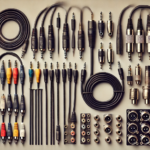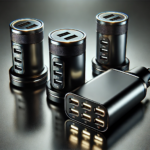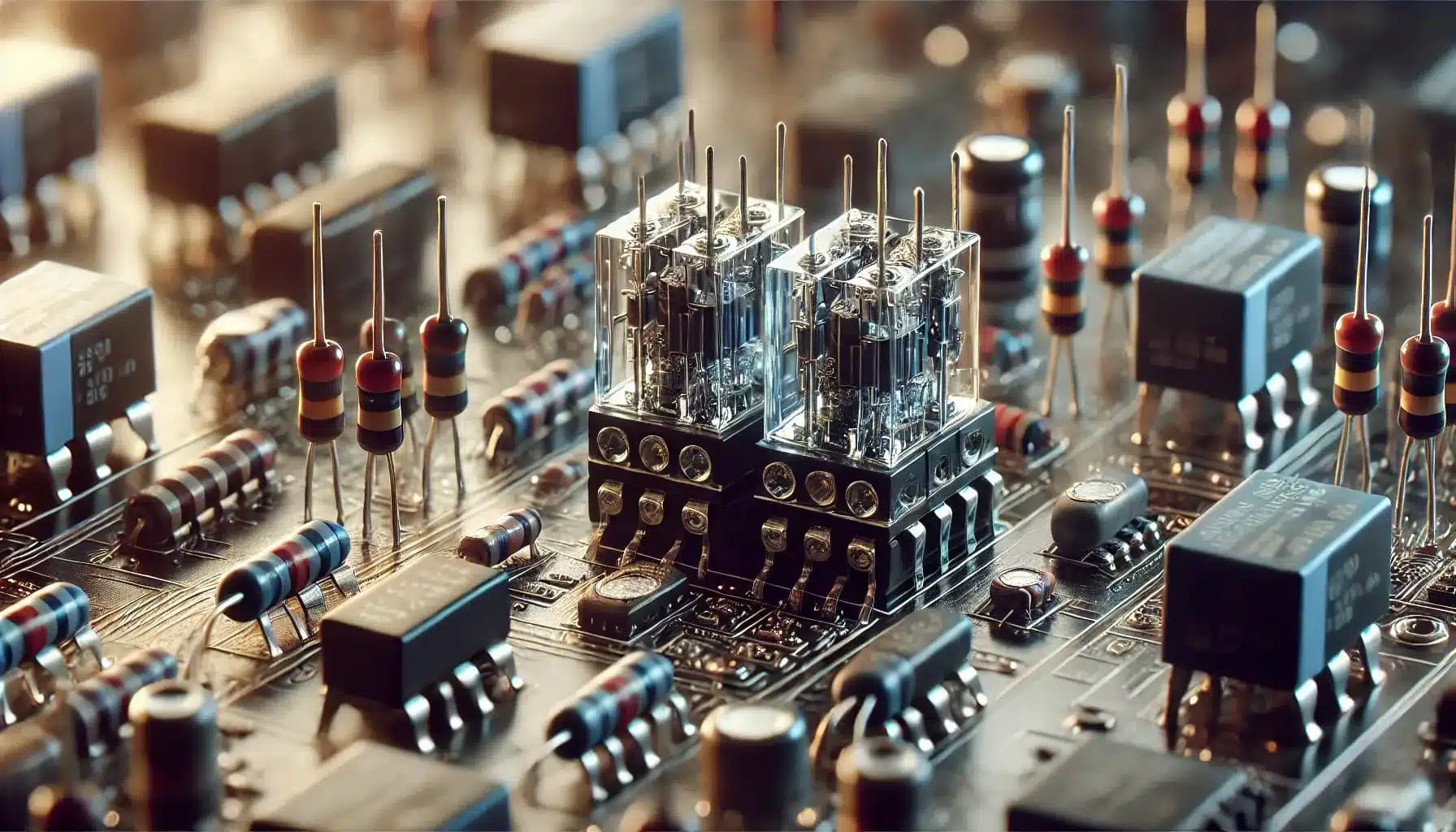
Introduction
In the realm of modern electronics, where transistors and integrated circuits reign supreme, reed relays are surprisingly holding significant importance. These electromechanical devices offer unique benefits that make them ideal for precise and low-power applications, often outpacing other relay types in specialised uses. But how do these simple devices make a significant impact on modern electronics? This article signifies the reed relays, covering their working principle and their popular types to find the right choice for modern electronics.
Understanding Reed Relays: Definition, Functionality, and Key Components
They are also called reed switches, are electromagnetic switches designed to control the flow of electrical current in circuits by utilising a magnetic field. These relays comprise coil-wrapped reed switches–electromagnetic switches that are responsible for controlling the current flow in circuits. A reed relay is reliable, compact, and consumes minimal power. In modern electronics, these electromechanical relays function to switch, isolate, and route electrical signals in complex systems, from telecommunications and automotive systems to industrial automation and consumer electronics. A typical reed switch consists of the following key components.
- Reed Contacts: These are thin, flexible metal contacts that respond to magnetic fields.
- Glass Envelope: Protects the contacts from environmental factors and ensures longevity.
- Coil: Generates a magnetic field when energised, closing the reed contacts.
- Inert Gas: Often, nitrogen or another inert gas is used to prevent oxidation and enhance lifespan.
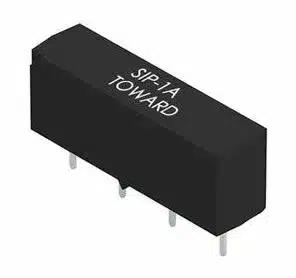
How Do Reel Relays Work? Exploring Their Operating Principle
At the heart of every reed relay are two or more ferromagnetic reeds that act as contacts. Reed relays work based on the principle of magnetic attraction. When the current flows through the coil surrounding the glass-encased reeds, it creates a magnetic field that pulls the reeds together, closing the circuit. Conversely, when the current stops, the magnetic field dissipates, and the reeds return to their original position, breaking the circuit. This simple mechanism allows reed relays to switch reliably at high speed and with minimal power consumption.
Most Common Types of Reed Relays Unveiled
Reed relays come in various types based on contact configurations, coil voltage, and special characteristics to meet different switching needs. Some standard types include:
- Single Pole, Single Throw (SPST) Reed Relay: The SPST reed relay is the most common type, suitable for simple on/off switching.
- Double Pole, Double Throw (DPDT) Reed Relay: This relay provides multiple switching options and is often used in signal routing.
- High Voltage Reed Relays: High-voltage relays are specifically designed to switch and carry high voltages. They are often used in medical equipment, such as MRI machines, and in the automotive industry for battery management systems.
- Surface Mount Reed Relays: Surface-mount (SMD) relays surface mount on printed circuit boards (PCBs). They are used in automated test equipment and other applications where space saving is crucial.
- Latching Reed Relays: Latching relays maintain their contact position after the actuation magnet is removed, thus requiring no power to maintain state. This makes them useful in applications where power conservation is important.
- Other Configurations: In addition to the above types, these relays are classified based on coil voltage and mounting types. These include chassis mount, PCB mount, through-hole, panel mount, and plug-in relays. Based on coil voltage, they include 5V, 12V, and 24V reed relays.
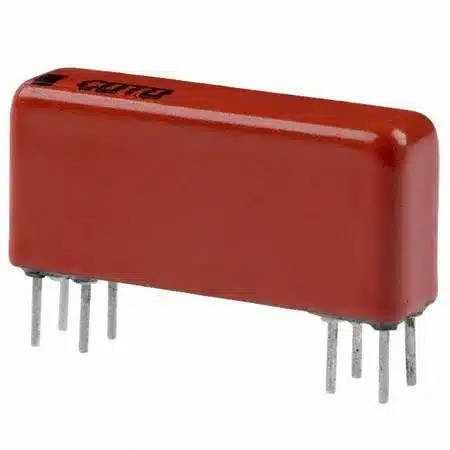
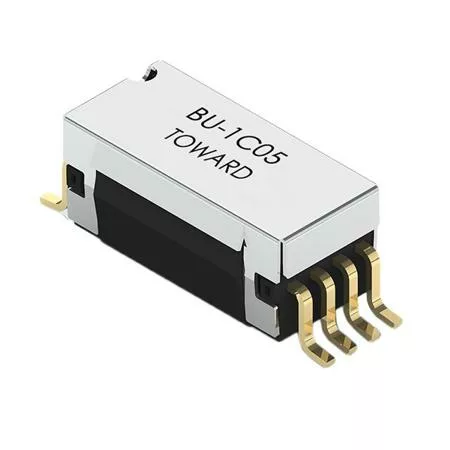
Reed Relays vs. Solid-State Relays: A Brief Comparative Analysis
While solid-state relays (SSRs) are often praised for their durability and lack of moving parts, reed relays have distinct advantages that indicate their importance. They provide a mechanical connection that creates a true open or closed circuit, resulting in near-zero contact resistance. This feature is essential in applications requiring minimal power loss. Moreover, these switches can also handle higher surge currents without overheating, whereas SSRs can be susceptible to damage under similar conditions.
The Enduring Importance of Reed Relays in Modern Electronics
Reed relays play a crucial role in modern electronics due to their standout properties and benefits. Here’s why they are significant:
Miniaturisation: Reed relays are compact and lightweight, making them ideal for use in densely packed electronic assemblies. This small form factor is particularly beneficial in modern devices where space is at a premium, such as smartphones and other portable electronics.
Fast Switching Speed: These magnetic relays offer fast switching times compared to mechanical relays. This is essential for applications requiring rapid response times, such as communication equipment and high-frequency test equipment.
Low Power Consumption: Reed switches require very little power to operate, which helps in reducing the overall power consumption of electronic devices. This is beneficial in battery-operated devices.
High Isolation and Low EMI: They provide excellent isolation between the control signal and the switched circuits, which helps in reducing electromagnetic interference (EMI). This feature is critical in sensitive electronic applications such as medical equipment and precision measurement instruments.
Longevity and Reliability: The hermetically sealed reed switch within the relay is protected from environmental factors like dust, moisture, and other contaminants. This sealed design provides a long life and reliable operation.
Versatility: Reed relays can switch both AC and DC currents and handle high voltage and power levels. This versatility benefits sectors such as telecommunications, automotive electronics, and industrial automation.
Final Thoughts
Reed relays are a testament to the adage that great things come in small packages, demonstrating their ongoing importance in the electronics industry. With their exceptional reliability, speed, and efficiency, they continue to be a cornerstone in the development of modern electronic systems. While there are other switching technologies available, such as solid-state relays and electromechanical relays, reed switches offer a unique combination of features and durability that modern electronics demand.










